After the harvest and grape preparation, the cuvees at Domaine Pierre-Olivier Garcia was then assembled: 1/3 whole clusters, 1/3 baie-par-baie grape caviar, and on top 1/3 machine-destemmed grapes.
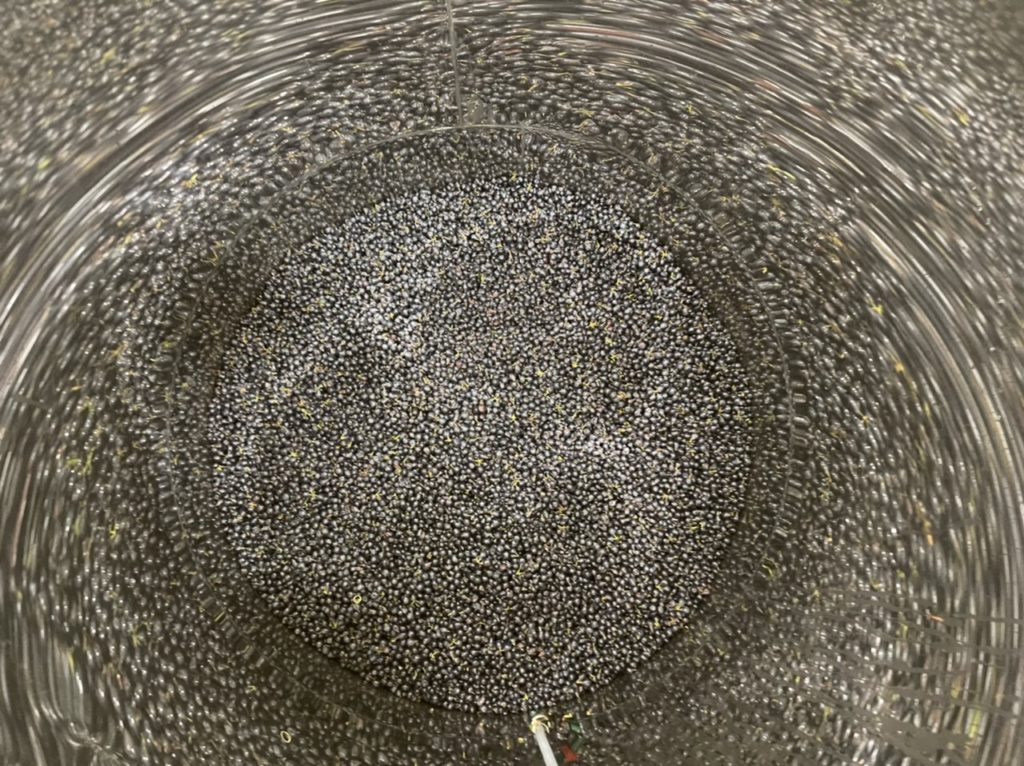
The wines’ handling in the winery follows some strict, but rather simple, rules.
First, we need to understand some French vinification terms; this in the end simplifies visits to Burgundian cellars.
French terms
Here is a short French vocabulary list; I will elaborate as I find the need to expand or explain.
- Egrappage: Destemming
- Éraflage : Destalking
- Foulage: Crushing whole grapes
- Encuvage: Vatting
- Pigeage: Punching down the cap of solids during fermentation
- Remontage: Pumping over
- Fermentation alcoolique: Alcoholic fermentation
- Ecoulage: Draining
- Décuvage: Devatting
- Pressurage: Pressing
- Assemblage: Blending
- Débourbage: Allowing solids to settle out of juice/wine
- Bourbes: Lies (general translation)
- Fermentation malolactique: Malolactic fermentation
- Soutirage: Racking
- Sulfitage: Sulphuring
- Elevage: Maturing
- Collage: Fining
- Filtration: Filtration
- Mise en bouteille: Bottling
Cold maceratation
Initially after encuvage, the grapes’ temperature is kept down for several days to prevent the cuvee from starting fermentation. This gives time for cold maceration, which extracts colour, aroma precursors, and juice. Maceration will end once the temperature rises to 13-14C, giving way to true yeast-driven fermentation. At some domaines, the tanks are chilled; others – like Domaine Garcia – use a natural process.
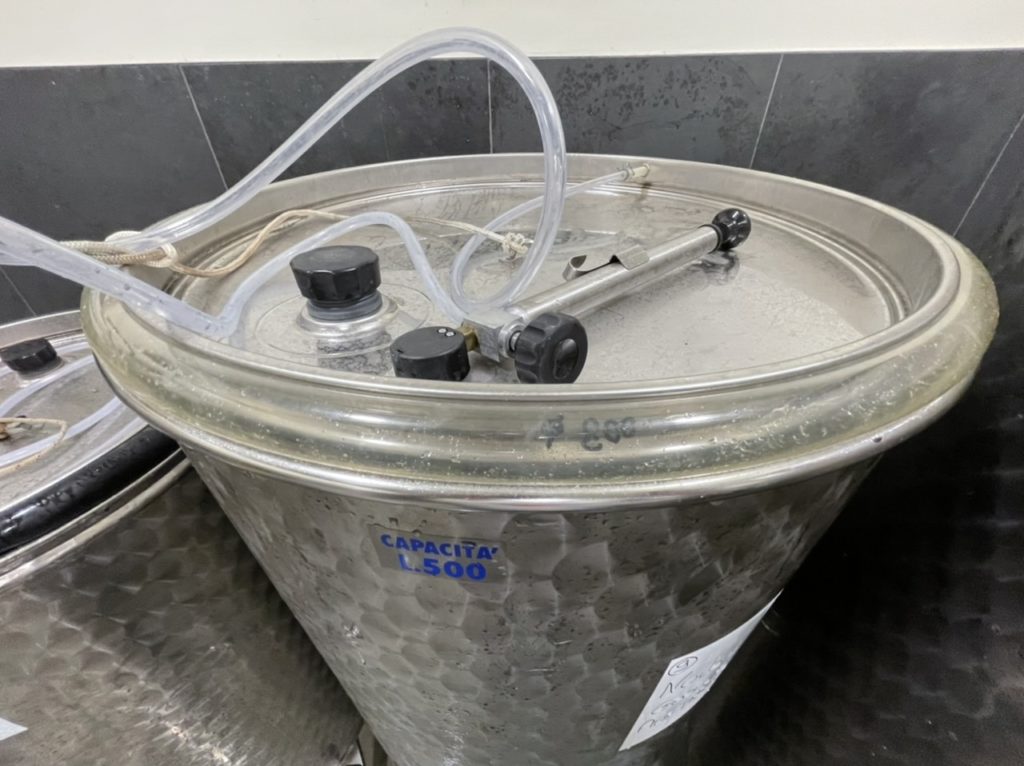
At P.-O. Garcia, the grapes for a given cuvee come directly from a refrigerated truck and are rapidly assembled in tank, keeping them naturally cool for some days, as the winery is also chilly.
As the temperature rises, fermentation starts, and then remontage commences.
Remontage; no pigéage
Remontage is the process of bringing wine up from the bottom of the fermentation tank and splashing it over the cap of fermenting grapes. This both aids in colour extraction and preventing oxidation of the cap.
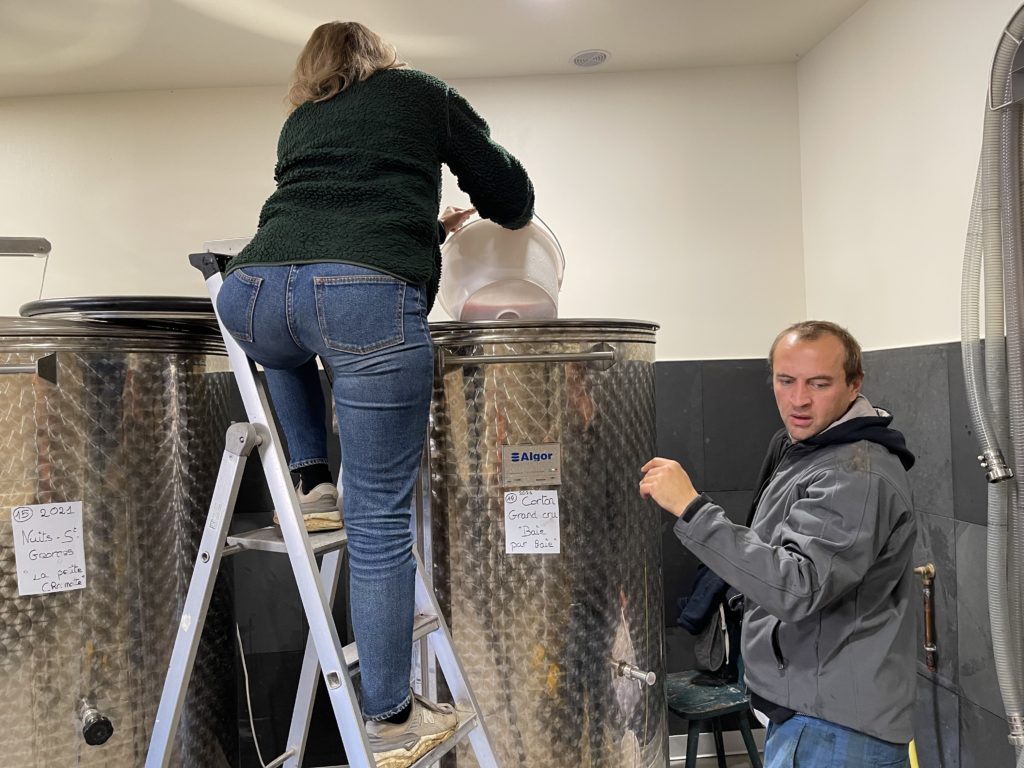
At Domaine P.-O. Garcia, remontage is done by hand or with a forklift, using gravity to fill either buckets or small stainless steel containers from the bottom of the fermenter tank. There is nothing out of the ordinary about this, although the testing, tasting, and analysis are quite rigorous, and used to determine the amount of rémontage required.
No pigéage (punch-down) is being used, making this in general quite a light extraction.
A possible exception…
An additional extraction of colour can be done during fermentation, depending on the needs of the cuvee. A worker (obviously not me) walks lightly through the cap, forcing it down, and helping fix colour and extract some additional tannin. Again, quite a gentle process.
Once the sugars have been consumed by the yeasts (amongst other parameters), it is time for devatting – or put more elegantly, décuvage.
Décuvage
After 15-18 days in tank, the wine is devatted and pressed. Devatting is done without pumping; only by gravity. This year the first cuvee of Nuits-Saint-Georges 1er Cru Aux Thorey was vatted on September 20, and decuvage and pressurage were done Oct. 7 – a “cuvaison” of 17 days.
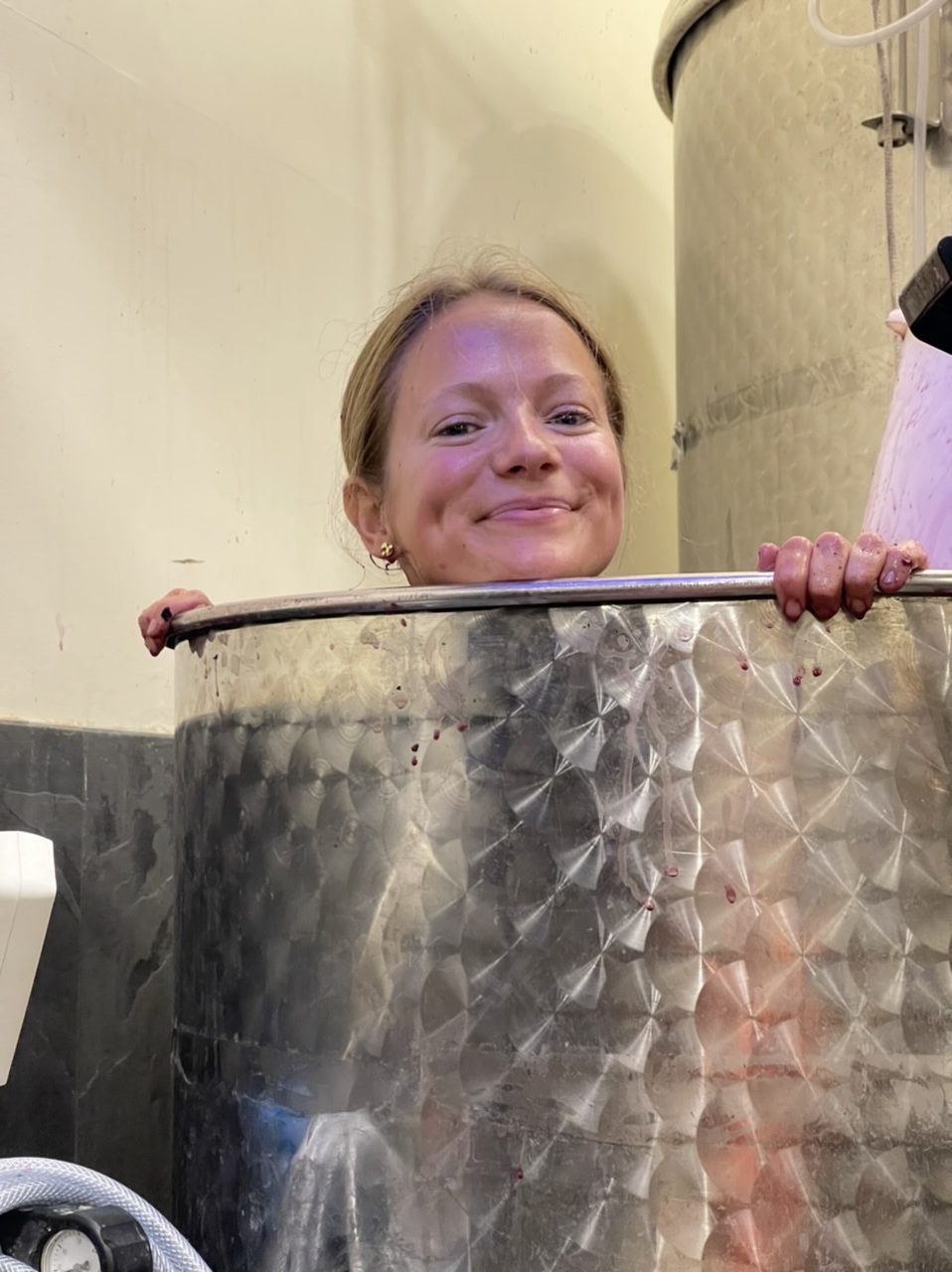
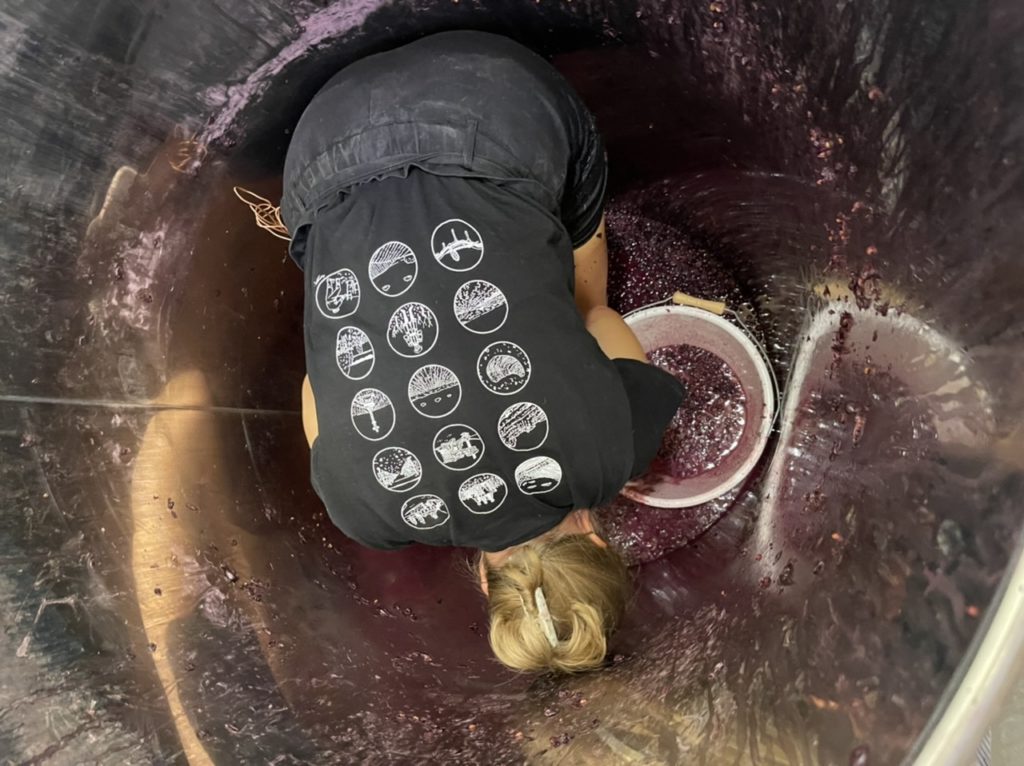
The free-flow wine is first transferred to a new tank, then the remaining fermented grapes are put into the press.
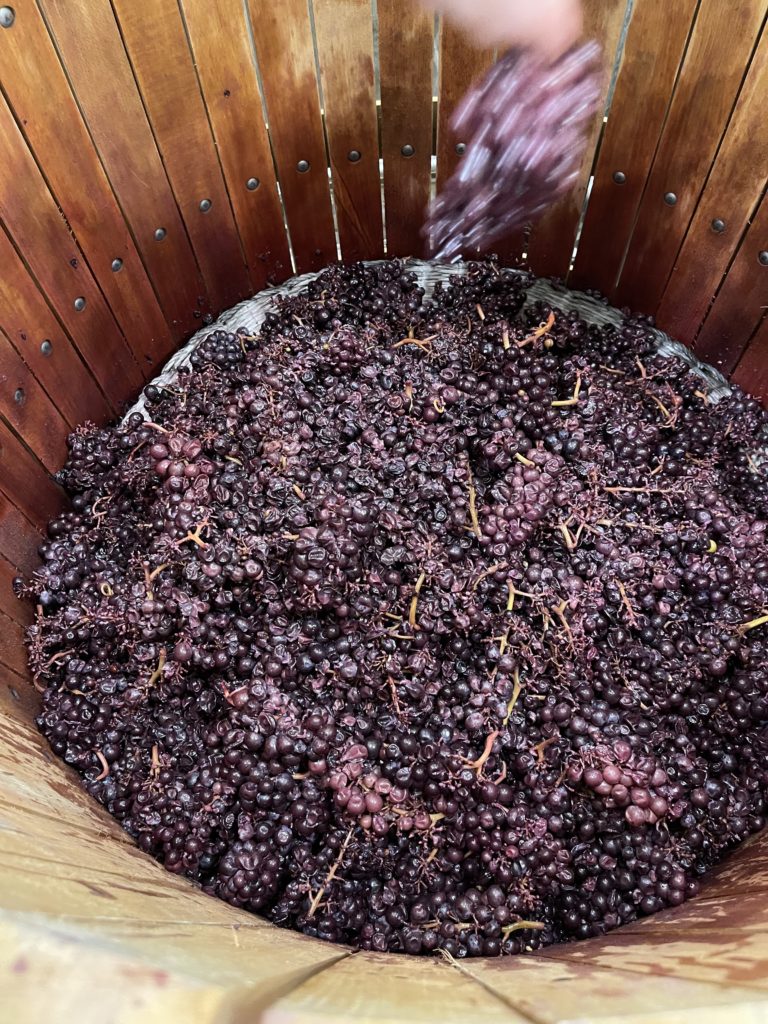
Pressurage
Domaine Garcia uses a traditional, vertical, basket press. According to Pierre-Olivier Garcia, this is a must if one wants to have full control over the pressing process.
The process is logical: the pressure is gradually increased in three steps: first to 1-1.5 Bar, which primarily releases the juice from the destemmed grapes; 2-2.5 Bar then releases the flavours and beautiful aromas from the baie-par-baie grapes; lastly, 3-3.5 bar is used to squeeze the juice from the whole-cluster grapes, simultaneously releasing more tannin, which starts to be increasingly discernible.
In the last part of this process, frequent tasting determines when to stop pressing in order to avoid extracting any potentially hard tannin.
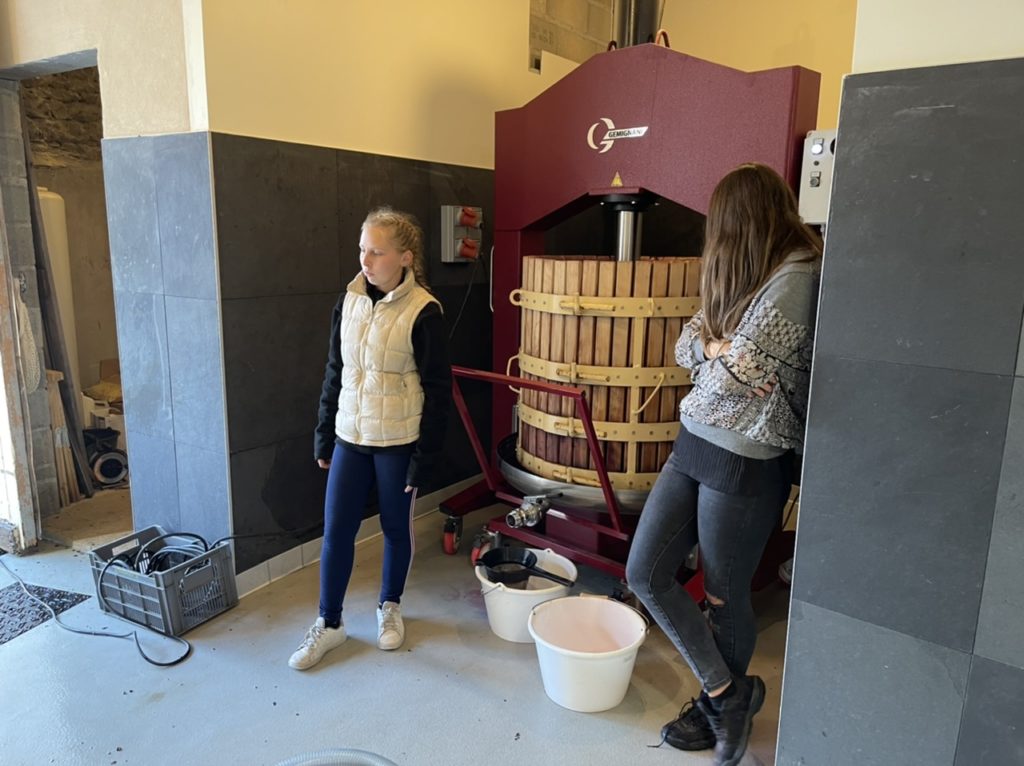
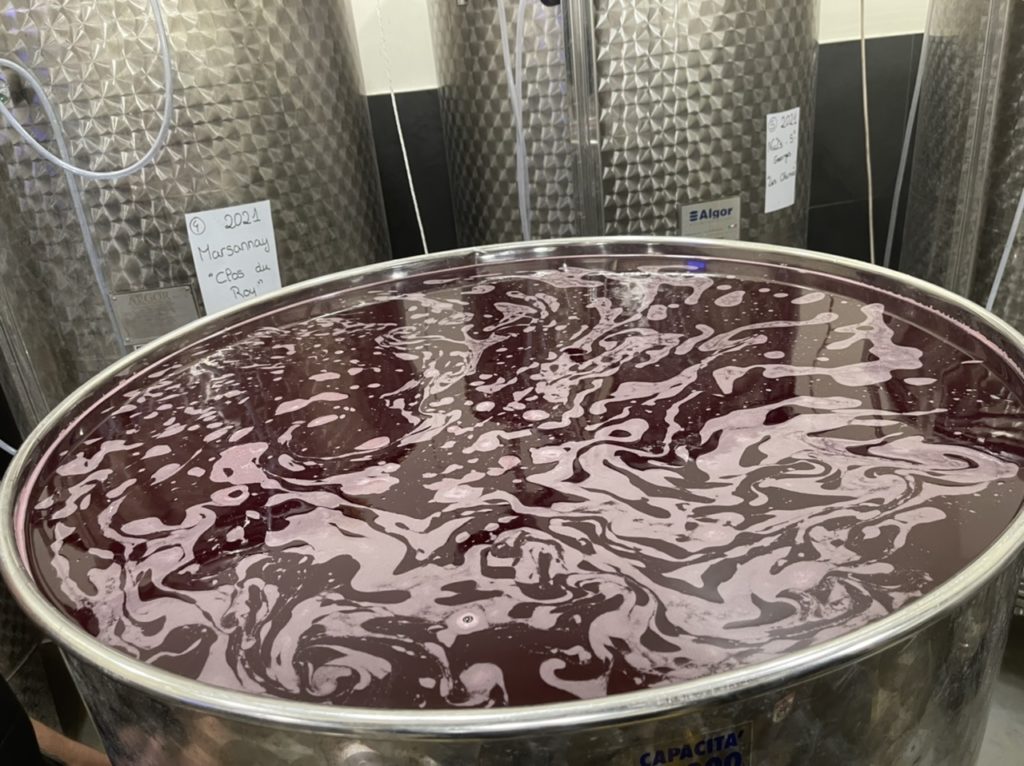

 - A true vin d’émotion – a Burgundy of passion
- A true vin d’émotion – a Burgundy of passion - A truly hedonistic wine – lively and enjoyable
- A truly hedonistic wine – lively and enjoyable - A vivacious wine for pure indulgance
- A vivacious wine for pure indulgance - A Vin Vif - fresh, energetic and with a light appearance
- A Vin Vif - fresh, energetic and with a light appearance
Leave a Reply
You must be logged in to post a comment.